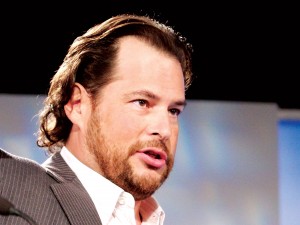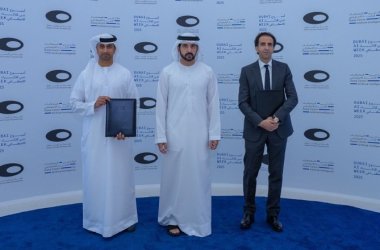 Microsoft’s upcoming Windows 8 will mark “the end” of the computer industry’s dominant OS due to increasing competition and choice sparked by alternatives, Salesforce.com CEO Marc Benioff predicted Friday.
Microsoft’s upcoming Windows 8 will mark “the end” of the computer industry’s dominant OS due to increasing competition and choice sparked by alternatives, Salesforce.com CEO Marc Benioff predicted Friday.
Windows 8 is a catalyst or “gambit” for CIOs, forcing them to say “am I going to Windows 8, or am I going to something else,” Benioff said during a question-and-answer session at Salesforce.com’s Cloudforce event in New York, which was webcast.
Years ago, “a common phrase was, ‘the Windows 7 upgrade cycle,'” Benioff added. “You’re not going to hear about the Windows 8 upgrade cycle. I’m not saying that as a big, aggressive statement against Microsoft, that’s just the reality of today’s environment.”
Windows has become “irrelevant,” being displaced by next-generation LTE wireless networks that will “disintermediate” the need for WANs and LANs, along with “all of these great services that are available right off the cloud.”
“Now, we’re not completely there,” Benioff added. “Everything is not heterogenous client, everything is not LTE, everything is not cloud … But we’re going to this great new place in our industry.”
A Microsoft representative declined to comment on Benioff’s remarks.
In an effort to validate his claims, Benioff referred to a conversation he had with a global CIO recently, whom he did not name.
“Her goal is to get rid of all of the PCs,” Benioff said. “She doesn’t see a demand curve from users for PCs.” Instead, the CIO is hoping to move to a BYOD (bring-your-own-device) approach, Benioff said. Next-generation mobile devices have “forced CIOs to make changes already,” he added.
Of course, Benioff is hardly the only person predicting that Windows 8 may be in trouble. His claim also serves Salesforce.com well, since its software is cloud-delivered to multiple platforms and devices, not installed in a customer’s data centre and run solely on PCs.
Also Friday, Benioff touched upon Salesforce.com’s ongoing attempt to become “the customer company,” in the sense of a vendor that can provide tools and services for connecting companies with their customers. That’s meant a primary focus on sales, marketing and collaboration software, but Salesforce.com recently took a small step into human resources applications with the introduction of Work.com for employee performance management.
It’s also formed partnerships with cloud ERP (enterprise-resource-planning) vendors such as Workday. But on Friday, Benioff maintained that Salesforce.com isn’t keen on going further into back-office processes for now. “We integrate with the back-office providers like SAP and Oracle but we want to be that dominant front-office provider, and that’s the piece we’re focused on,” he said.
Salesforce.com has also been presenting itself as a vendor that can help companies become “social enterprises,” with many aspects of the business becoming infused with a social-networking and sharing milieu.
One questioner noted that this approach constitutes a move into “business transformation” for Salesforce.com, a pursuit that comes with higher expectations on the part of customers.
“In a lot of cases we just apply our model to their business, and they start to become a lot like our business,” Benioff said. “I see Coca-Cola as a cloud company, I see Toyota as a cloud company.”
All these companies are looking to transform and change because they want to grow,” he added. “There’s all these vehicles for transformation today. They need a catalyst. If we can be a facilitator for that, great.”
While Salesforce.com has grown rapidly in recent years toward US$3 billion in annual revenue, the growth opportunities may only be just starting, Benioff suggested.
“The next generation of leaders has come up, the next generation is getting promoted and the last generation is going out,” he said. “That’s what’s happening at a lot of our customers. The people who made that Oracle decision, that SAP decision, they’re not there anymore. Because in the last five to 10 years, all the seats have changed, and the new people are modern, up-to-date people. Their brand preference on technology has changed.”





